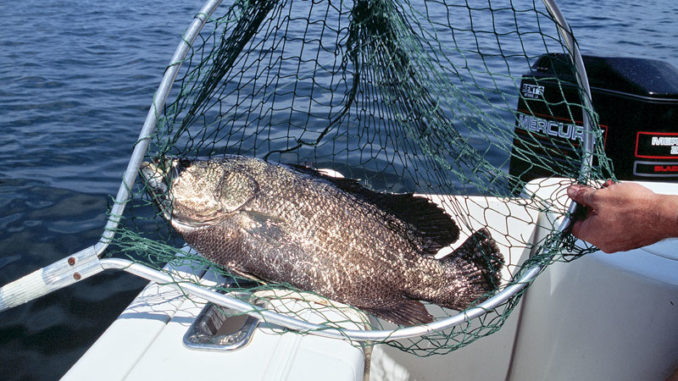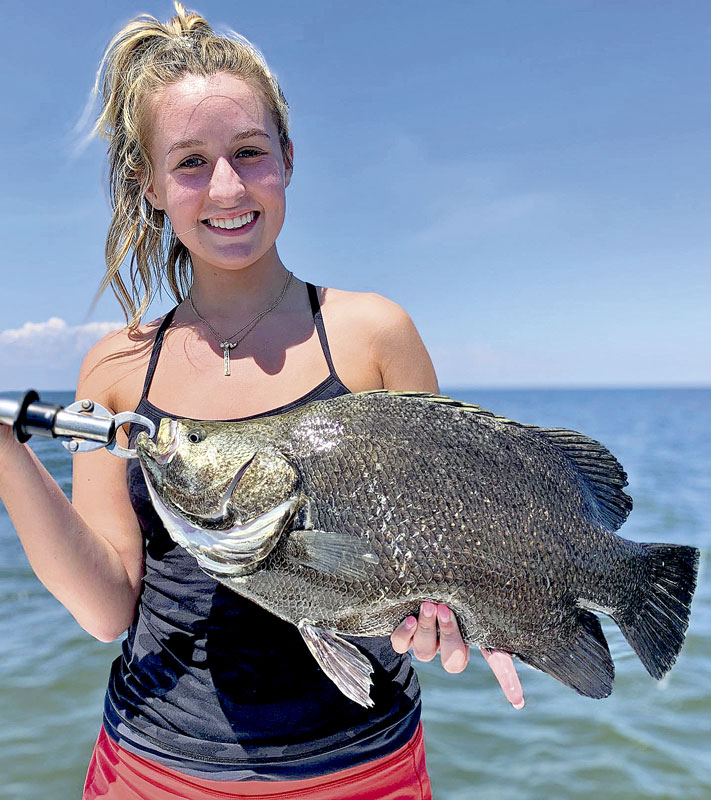
This unique fish appears to have three tails; it’s found from ocean to ocean
The Atlantic tripletail, Lobotes surinamensis, is a warm-water fish that, despite its name, lives in many parts of the globe other than the Atlantic Ocean, including the Pacific Ocean. They are plentiful from Chesapeake Bay south, around Florida, and into the Gulf of Mexico.
Tripletails have rounded dorsal and anal fins that extend back almost to their tails, giving them the appearance of three tails, hence their name. They vary in color from silver to yellow to mottled black, and they can change their shade of color based on their surroundings.
These fish have disproportionately small eyes and large mouths, and as they grow, the fish’s head becomes concave.
Commonly referred to as simply “tripletail” or “blackfish,” these fish are somewhat migrational and are found in big numbers along the Gulf Coast from summer through late fall. Fisheries biologists believe almost all tripletail head offshore during the winter and stay there until late spring/early summer.
While scientists know little about how tripletails spend their winters offshore, the behavior of these fish along inshore waters is highly documented and witnessed by biologists and anglers alike. Anglers find them floating sideways under structure, which they use as shade and to ambush prey. From a distance, they look like leaves or submerged weed mats. Up close, they appear very lazy, but anglers see otherwise once a tripletail takes their hook.
Tripletails are easy to spook, but they quickly take a well-placed hook, especially one baited with shrimp.
Structure species
Crab-pot markers, buoys, surface weeds or any floating structure are good places to look for tripletail. One Mississippi angler reports catching a tripletail he spotted under a floating tennis ball with one eye in the shade of the ball.
Tripletails have hearty appetites. They eat a wide range of foods, including small fish, crabs, shrimp, and other crustaceans. They are very quick to take a baited hook, but anglers find these fish spook easily if their cast lands too close to the fish.

Summer spawn
Throughout the summer and into the early fall, tripletails spawn along the inshore and nearshore waters of the Atlantic Ocean and Gulf of Mexico. Little is known about their spawning habits, other than it is the only time these fish gather in large numbers. When not spawning, tripletails are mostly solitary, but they sometimes travel in groups of three or four fish.
Due to their unique body shape, tripletails are rarely confused with other fish species. However, some inexperienced anglers have misidentified them as black sea bass and black drum. They have numerous nicknames throughout their range, but are most frequently known as tripletails or blackfish along the Gulf Coast.
Louisiana’s tripletail state record is a long-standing one. Caught by Mrs. Jimmy Toups in July 1959, the record fish weighed 39 1/2 pounds.
Steve Hand caught the world record for the species in Zululand, South Africa, in June 1989. That fish weighed 42 pounds, 5 ounces.